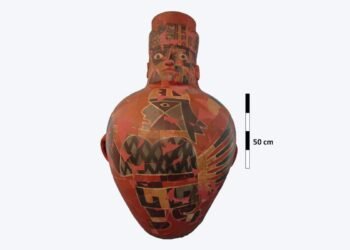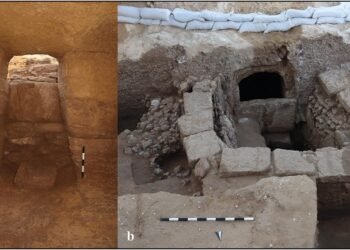The bizarre pattern of tiny pits on fossil teeth, once thought to be signs of disease or malnutrition, might actually hold a genetic key to unlocking our evolutionary history. According to a recent study, published in the Journal of Human Evolution, the shallow, uniform, circular pits named “UCS pitting” are associated with fossil molars from Paranthropus, an extinct genus closely related to humans, and might be a feature rather than a defect.

Led by researcher Ian Towle of Monash University’s Palaeodiet Research Lab, the research team analyzed fossil teeth spanning over two million years of evolution from eastern and southern Africa sites. Speaking to Live Science, Towle explained, “Teeth preserve an incredible amount of biological and evolutionary information. This specific type of pitting might turn out to be a unique marker for certain evolutionary lineages, helping us identify fossils.”
The pits are not randomly or haphazardly distributed. Instead, they are very uniform in size and spacing, and are found mostly on the thick enamel of the molars. Notably, though, the pits do not correspond to other signs of stress-induced enamel defects, such as horizontal lines or generalized damage to multiple teeth. This pattern suggests a developmental, likely genetic origin rather than environmental etiologies like malnutrition.

The researchers found this UCS pitting primarily in Paranthropus species such as P. robustus of South Africa and other Paranthropus species from eastern Africa. Interestingly, some early Australopithecus fossils in Ethiopia’s Omo Valley, some 3 million years old, also had the same kind of pitting. The feature, however, was not observed among more than 500 teeth of Australopithecus africanus from southern Africa and might reflect an evolutionary divergence between the two regional groups.

Infrequent findings of UCS-like pitting in members of the Homo genus, such as the so-called “hobbit” species, Homo floresiensis, from Indonesia and Homo luzonensis, were also noted. While their presence in these species is intriguing, Towle cautioned that such rare instances make it difficult to rule on their evolutionary significance. He noted that “Further research is essential before UCS pitting can be confidently used as a taxonomic marker in hominin studies to identify individual species.”
What makes this finding even stronger is the contrast with a rare modern condition known as amelogenesis imperfecta, which disrupts tooth enamel development and occurs in about one in every thousand people. While the UCS pits are comparable to those of this disorder, their frequency, occurring in up to 50% of Paranthropus samples, and consistency over millions of years suggest that they were not harmful.

The discovery opens the door to using UCS pitting as a new morphological marker to help unravel the hominin family tree. Researchers currently use dental features like enamel thickness and cusp shape to differentiate ancient species, and this pitting pattern could be another tool.
In the future, scientists want to use paleoproteomics, which is the study of ancient proteins trapped in enamel, to investigate more deeply. That could determine whether the pits were associated with sex-specific traits or other Paranthropus genetic patterns.























Comments 0